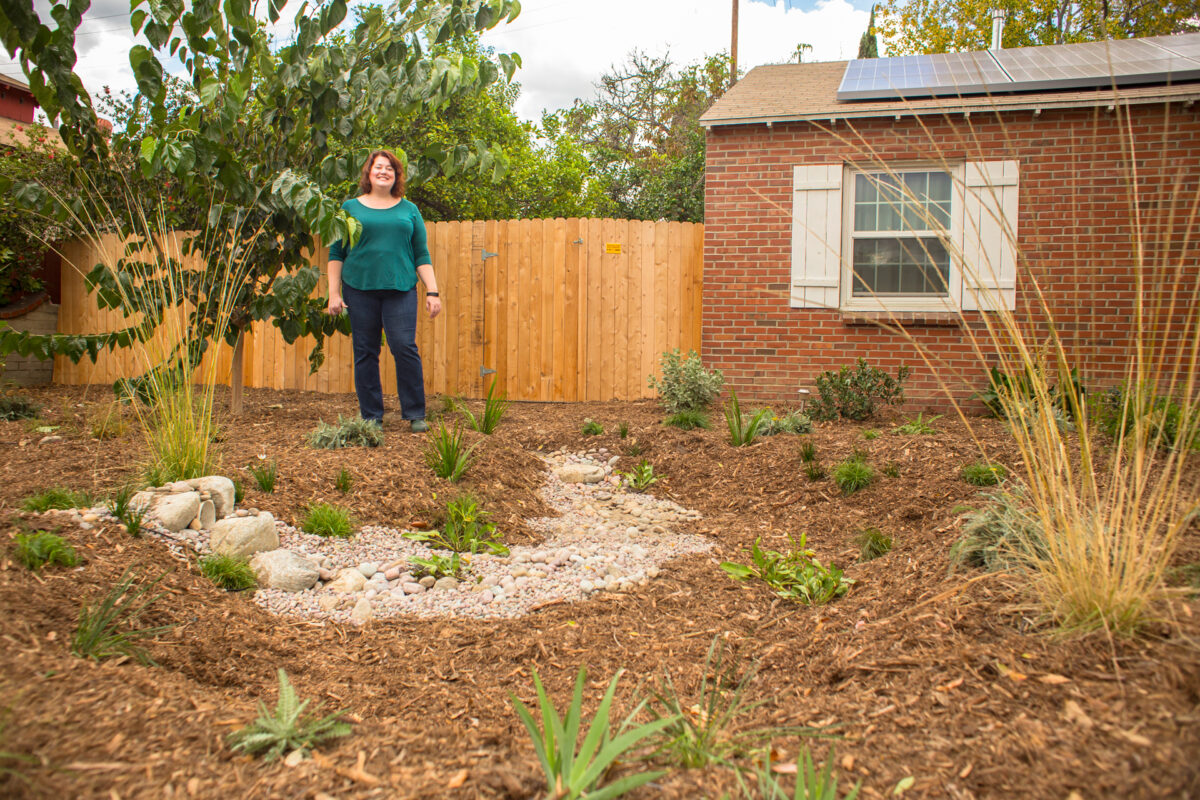Things are dry out there. Drought conditions are currently battering California and our changing climate only further puts us at risk when it comes to water security. Across the state, an average of 50% of residential water use goes towards landscaping, killing your lawn and replacing that non-functional turf with native plants is one of the best ways you can help in the fight to conserve water.
How do you go about killing your lawn? Well, the easiest and best way to reduce your turf is sheet mulching. With sheet mulching, your yard can go from a water-thirsty, outdated green shag carpet to a sustainable garden with about as much effort as it takes to mow the lawn. Best of all, you only have to do it once, meaning you can get rid of that mower in no time.
Sheet mulching is hassle free and effective. To sheet mulch your lawn, follow these easy steps:
- Wet the lawn and then cover it with one layer of cardboard or six layers of newspaper. Be sure to overlap the sheets by at least six inches to prevent the grass from growing through. Make sure you remove any slick glossy ads from newspapers and remove tape or labels from boxes – you just want pure paper or cardboard.
- Add 4-6 inches of mulch on top of the cardboard or newspaper. Mulch is basically wood chips that are used to help slow evaporation and enrich the soil. (You can likely get mulch for free by contacting local professional tree trimmers!)
- Water it! Keeping the mulch and cardboard moist helps it to decompose.
- After 2 months, dig through the layers to plant. The cardboard and paper will biodegrade and become part of the soil. If you don’t want to wait that long to plant, simply move the mulch away from the places where you want to plant, then cut out the cardboard and remove it and the grass. That way your yard will get an instant transformation, from “wasting water” to “water-wise.”
It’s really this easy! You just put down cardboard, dump mulch over it, keep it moist, and wait. And you can do it any time – there’s no time like the present. Once you’ve killed your turf, you can replace it with native and/or climate-appropriate plants. Native plants are an especially great choice, because they attract local insects and birds, which in turn support our local wildlife and habitats.
And for such a simple solution, sheet mulching makes a huge difference. Native plants use 85% less water than turf, and when an average home in LA replaces turf with natives and installs some simple rain water harvesting techniques (like rain barrels and rain gardens), that home saves over 90,000 gallons of water annually. Add up all the homes in LA and it doesn’t take long to understand the incredible power of this DIY project!
Plus, mulch and cardboard are free or cheap, so sheet mulching leaves plenty of funds for lovely plants, or heck, even getting rid of that pop-up sprinkler and converting to drip irrigation. You’ll go green and have some green left over for treating yourself to something special. After all, you just helped save the planet – you deserve a treat!

